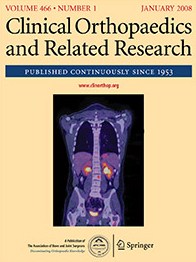
ARTHROPLASTY
TKA: Minimally invasive subvastus approach yields no gait or strength benefit at 2 months
This report has been verified
by one or more authors of the
original publication.
Clin Orthop Relat Res. 2013 Jan;471(1):46-55. doi: 10.1007/s11999-012-2486-1
40 patients scheduled for primary total knee arthroplasty (TKA) were assessed for eligibility and 37 were randomized to receive the minimally invasive subvastus approach or standard medial parapatellar TKA technique in order to compare outcomes after 2 months. Subjective function and quality of life, return to normal activities of daily living, quadriceps strength and gait kinematics were assessed. The results indicated that there were no pertinent differences between the two groups.
Unlock the full ACE Report
You have access to {0} free articles per month.Click below to unlock and view this {1}
Unlock NowCritical appraisals of the latest, high-impact randomized controlled trials and systematic reviews in orthopaedics
Access to OrthoEvidence podcast content, including collaborations with the Journal of Bone and Joint Surgery, interviews with internationally recognized surgeons, and roundtable discussions on orthopaedic news and topics
Subscription to The Pulse, a twice-weekly evidence-based newsletter designed to help you make better clinical decisions
Exclusive access to original content articles, including in-house systematic reviews, and articles on health research methods and hot orthopaedic topics
Or upgrade today and gain access to all OrthoEvidence content for just $1.99 per week.
Already have an account? Log in


Subscribe to "The Pulse"
Evidence-Based Orthopaedics direct to your inbox.
{0} of {1} free articles
Become an OrthoEvidence Premium Member. Expand your perspective with high-quality evidence.
Upgrade Now













































































